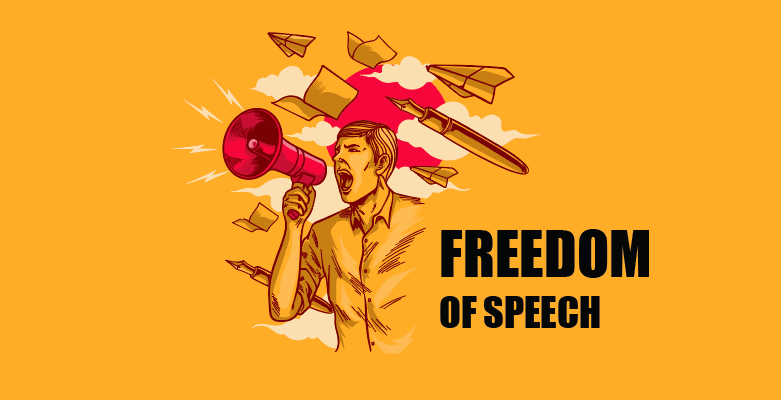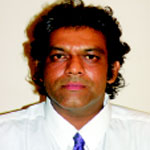Freedom is, arguably enough, the most cherished right of mankind. And, among them all guaranteed by the Indian Constitution under Article 19, it’s the Freedom of Speech and Expression that fashionably affects all Indians at the onset. Why, even the exercise of dissent towards the violation of any freedom pivots upon the most basic of them all…speech and expression.
It is this very freedom that primarily guarantees the Press as the Media is popularly known, the right to express. Despite popularly misunderstood, the Press in India has no special rights to express as distinct from the others yet exercises it in myriad ways tempered with a typical boldness symbolic of the Fourth Estate.
It is this freedom that empowers the Fourth Estate to hold its own in face of opposition from a powerful Legislature; a hard-nosed Executive or a rigid Judiciary. If the Press as Media was popularly known in the yesteryears did not exercise the Freedom of Speech and Expression with such alacrity, millions of human interest stories speaking reams of oppression, exploitation even trysts with freedom struggles and unlawful regimes would not have seen the light of the day.
It isn’t that the Press in India has the freedom to write about anything or report on any issue in any manner they like. Like all other freedoms, the one of Speech and Expression isn’t without fetters. Article 19, that guarantees the freedom, also lays down restrictions to the same. So, any act in the exercise of one’s Freedom of Speech and Expression is restricted if it compromises the sovereignty and integrity of the State; Security of the State; Friendly Relations with Foreign Countries; Public Order; Decency and Morality; Contempt of Court; Defamation and Incitement to an Offence.Social Media and restrictions by law
And concurrently, the showdowns that members of the media have with the law and polity are triggered by the restrictions whose reasonableness too aren’t open to generic interpretation but are to be examined by a judiciary which alone is qualified to do so. While the Press aka Media for all practical purposes had its role chalked out and demarcated for legal purposes, the emergence of the Social Media, the range of associated tools and its sporadic use across platforms has spawned an entirely new and rapidly burgeoning generation exercising the all-pervading Freedom of Speech and Expression, often even without realising the implications of it.
Oddly and not surprisingly, the restrictions to the Freedom of Speech and Expression mostly exercised by the traditional media were peppered with a sense of logic, equity and common sense more than the understanding of any lofty jurisprudence, was lost on the new entity – the Social Media.
Where public responses to films are concerned, they surely have little to do with the film-maker’s Freedom of Speech and Expression. Look at the responses to Kai Po Che and The Attacks of 26/11 in the last decade that were frightfully violent to say the least. The retorts associated with the films mostly veered towards acute criticism and disdain towards the movies’ treatment of real issues. Most opinions are generated through hearsay reviews and conclude with the regular advisory on “how the film should simply not be watched,” surely not if you were a “sensitive Indian” or “cared for those actually affected” and so on and forth. Kai Po Che, a story of three friends and their journey through Gujarat, at the time of the earthquake and the Godhra riots, found itself looking down a barrel of criticism from a sea of analysts flaying the movie for failing to put “things in perspective.”
The charge being the plot revealed barely a slice of the story and didn’t do justice to incidents which had been “selectively deprived of coverage”. That the film touched upon a communal situation only worsened things particularly since it came at a time when the much-talked-about the then Gujarat Chief Minister Narendra Modi was braced to lead the opposition and even plugged as “PM-in-waiting” by an enthused opposition.
Freedom to bay for blood
Cut to The Attacks of 26/11 that dealt with Mumbai’s infamous terror attack which exposed the lie of the city’s security cover and “Second only to Scotland Yard” claim of the police. Ram Gopal Verma went ahead and made the film on the attack, despite making public his firm refusal of intent to do so immediately after having visited the Taj Mahal Hotel with Vilasrao Deshmukh and his son Ritesh soon after the attack. Verma’s change of mind or intention isn’t questionable by law, not by any stretch of imagination. His attempt to stir public ire by reviving the trauma of terror on celluloid met with predictable success. Each time, joint commissioner of police Nana Patekar matched terrorist Ajmal Kasab’s abuses, viewers went into raptures of retributive delight.
While the prior had the issue of communal violence running parallel – also for a bit of time – to the main theme of the film – the intertwining lives of three friends, the other solely dealt with the single instance of terror itself. Issues of ethics on whether movies of this nature can be made and watched or should be made and watched are personal in nature. The Censor Board orders directors to remove anything that’s offensive, including sex, nudity, violence or subjects considered politically subversive. That the board permitted the two to be screened prima facie vindicates their position.
Lobby fights for one, flays another
Much earlier, War and Peace that depicted visuals of nuclear testing and the September 11, 2001 attacks created by Anand Patwardhan was asked to make 21 cuts, a prerequisite to being allowed to have the certificate for release. Patwardhan said, “The cuts that they asked for are so ridiculous that they won’t hold up in court…but if these cuts do make it, it will be the end of freedom of expression in Indian media.” The Bombay High Court decreed the cuts unconstitutional and the film was finally shown uncut.
Ironically, the same lobby that strives for freedom of opinion in social media and across platforms citing laws ensuring unbridled speech and expression has been flaying Chetan Bhagat for indulging in “political opportunism.” Fact remains that neither Chetan Bhagat nor director Abhishek Kapoor claimed to document the reality of Godhra riots through the film and, by virtue of that, stand exonerated of charges of bias. In contrast, The Attacks of 26/11 expressly maintains at the onset itself that “This is a true story of how those attacks happened.” Capitalising on a public ire towards an attack that held the city at ransom for three days, The Attacks of 26/11 oddly focused on the attacks at Chhatrapati Shivaji Terminus, Leopold Café, Cama Hospital and the Taj Mahal Hotel while ignoring the ones at Nariman House and Oberoi Trident Hotel completely.
Message as silent as the lifeless terrorist
The bloodied violence and the senseless shooting apart, the story was almost a biographical version of Ajmal Kasab’s killings, capture and his ultimate hanging. Frenzied dialogues on Islam and its virtues, between a hugely misled terrorist and a worldly-wise joint commissioner apart, the true story began with the joint commissioner refusing to get angry at Kasab saying, he was just a ‘kutta’ and the real enemies were across the border – his handlers, but ended rather abruptly and oddly, with Kasab’s death. The message, if any, was as silent as the lifeless terrorist. Freedom of Speech and Expression is guaranteed by the Indian Constitution. What the Indian Constitution does not guarantee is the ‘quality’ of speech and the ‘intelligence’ in expression. So, while we consider it a legal entitlement to comment on a film in social media and sit in judgment over it being screened in the neighbourhood hall, even freely flay the director for trying to capitalise on a public tragedy, we tend to overlook the fact that we’re doing exactly the same. The only difference being that despite all freedom, films have to pass through the fine comb of a Censor Board in a democracy: On our part, we presume that our comments in print or in sections of social media are immune to checks of ethics and accountability.


 [/column]
[/column]